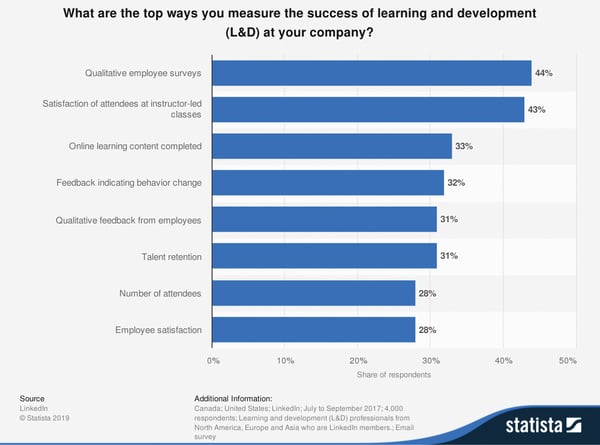
Overall, the global outlook for professional training appears to be good. Expenditure for further education worldwide grew by nearly 60 billion U.S. dollars between 2007 and 2018; in 2017, employers spent around 1,296 U.S. dollars per employee on learning and personnel development; this meant an annual learning volume of 34.1 hours per person in 2017 – that amounts to three-quarters of the working week in Western countries.
While this might give the impression of rosy times around the world, the reality is much different. With regard to lifelong learning and further education, a distinct north-south divide can also be felt in Europe in terms of participation in adult learning. The reality in individual companies does not necessarily have to match the statistics: Limited budgets, limited personnel resources and difficulties in achieving the ROI on continuous training initiatives – these were some of the typical challenges facing HR departments in 2018, for example, in the USA. It is clear that those looking for success need to nurture their employees and invest in them. Is professional training a main priority in your company? Yet, do results often fall well short of expectations – and do the reasons for this not always come to light?
Then, unfortunately, you are in good company. Quality surveys conducted with employees, satisfaction surveys following open, instructor-led seminars or the degree of fulfillment of online training courses – those are the top three methods used, for example, by companies in the USA and Canada to measure whether their strategy for continuing training is successful.
They all have in common that they either only show partial aspects of the training strategy or they are themselves based on the subjective impressions of participants. However, they do not provide an objective picture of how successful competency creation and development actually is, and to what extent the needs of the company are met as a result. How exactly do you evaluate the success of your personnel development strategy and what methods do you use?



